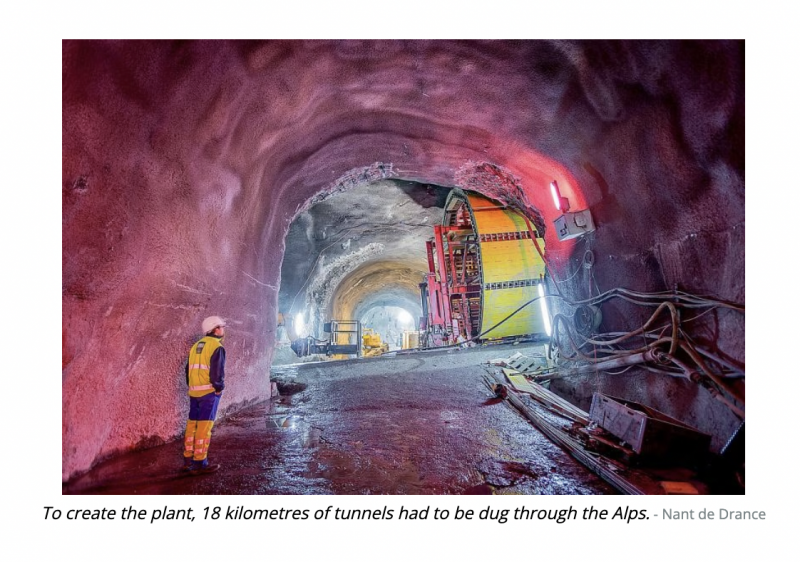Switzerland spent 14 years and €2 billion on this 'water battery'
Published on by Water Network Research, Official research team of The Water Network in Case Studies
A water battery capable of storing electricity equivalent to 400,000 electric car batteries will begin operating in Switzerland next week.
The pumped storage power plant was built into a subterranean cavern in the Swiss canton of Valais.
With the ability to store and generate vast quantities of hydroelectric energy, the battery will play an important role in stabilising power supplies in Switzerland and Europe.
What is a water battery?
A water battery or pumped storage power plant is a type of hydroelectric energy storage. The battery is made from two large pools of water located at different heights.
It can store excess electricity by pumping water from the lower pool up to the higher pool, effectively “charging” the battery.
When electricity is needed, the direction of the water is reversed. The flow of water rotates a turbine which generates hydroelectric power.

To create the plant, 18 kilometres of tunnels had to be dug through the Alps. Nant de Drance
Hydro batteries are especially useful for storing excess energy produced by intermittent power sources such as wind, solar and nuclear. The energy is pumped up to the top pool in times of overproduction and can then be released to produce energy during periods of high demand.
Water batteries are the largest-capacity type of grid energy storage currently available.
Attached link
https://www-euronews-com.cdn.ampproject.org/c/s/www.euronews.com/green/amp/2022/06/30/enormous-water-battery-in-switzerland-will-help-prevent-power-shortagesTaxonomy
- Energy
- Renewable Energy
- Hydroelectric Energy
- Energy
- Renewable Energy